
A Week of Extreme Weather In October
Hello friends,
October is usually a tumultuous month for us here in Dunedin, with the weather swinging in extremes from hot north westerly gales, to cold southerly fronts, including the threat of possible snow and frost, and this October was definitely no different from previous years regarding this.
In the third week of October we were warned of a spring north westerly wind storm approaching, and the resulting weather watches and orange wind warnings from Metservice had me worried.

In preparing for the north westerly wind storm, it first meant picking up anything outside that could go airborne, including my frost protection buckets (I lost one in the wind, but I eventually found it days later), taking down our bird feeders, moving our patio furniture to a more protected spot, putting our wheelie bins into the woodshed, and tying the glasshouse doors shut as they face the North West.


I also took the precaution of moving my most precious plants out of the glasshouse and into the garage for extra protection. I just couldn't risk losing our tomato plants, and dahlias in pots due to something unforeseen happening, like our glasshouse blowing away.
The big north westerly wind storm itself was frightening, and our house shook and shuddered for hours, first with the North Westerly gales, and then the Southerly front behind it, which took out our grid power for 8 hours. Luckily, we have solar panels on our roof, and a solar battery in our garage, and this system kept our house powered during the blackout (our battery has a storm watch function, and as soon as Metservice sent out the orange wind warning, the system began charging the battery to 100%). We are now very glad we invested in a solar system a couple of years ago.


All around Dunedin mature trees were blown over, trampolines went flying, fences were blown over, and the roofs of houses were lifted off. Many people in the lower South Island lost power for hours, and some for days, and even weeks.
Unfortunately, there were two casualties in my garden from the north westerly wind storm. My Avalanche camellia in the backyard garden snapped off at its base, killing the plant. It was only a year old, and didn't have a thick trunk yet, and it looks like it bent over in the wind until it just snapped. The only good thing about this happening is that it has given me one extra spot to plant a dahlia in this summer, but I am sad that I lost a beloved plant...
And the second casualty, was that my quince tree lost two north west facing tree limbs. They snapped partially off, so I had to trim them back to the nearest healthy branch on the tree. My quince tree is only 3 years old, so it won't suffer from losing a couple of young tree limbs. Thankfully the quince fruit forming on the tree didn't fall off during the storm.


With the north westerly wind storm over, it was time to clean up the garden of plant debris, reinstate our garden furniture to the patio, return the bird feeders to their rightful places, and transfer my precious plants sheltering in our garage back to the glasshouse.
The weekend after the north westerly wind storm was Labour Weekend, the traditional time to plant everything out in the vegetable and main gardens, but I was wary of doing this because Metservice forecast a cold southerly system occurring, with the potential of snow to low levels, and a frost afterward. I refused to risk planting out all my plants into the garden that weekend, only to have to frost cloth them for nights afterward.
So instead of spending the entire Labour weekend out in the garden planting out everything, my plants stayed safely inside the glasshouse where it was definitely warmer than outside, and I watched as the cold weather arrived...
And thank goodness I listened to the Metservice forecast, because the predicted low level snow fell, and settled to about 200 m above sea level in the hills surrounding us, and our temperature dropped to 1.1˚C overnight.


The dahlias growing outside were protected by their frost protection buckets, and all the plants in the glasshouse was protected by a number of layers of frost cloth. After a couple of days the weather warmed up back to early November temperatures, and it was time to plant stuff out in the garden, but it adds to my growing evidence that late October/early November is a risk to my Labour weekend gardening plans.
Have a wonderful day
Julie-Ann
Want to discuss my post? Feel free to chat with me on Instagram or Mastodon or Bluesky.
How To Keep My Outdoor Dahlias Alive During Spring Frosts
Hello friends,
We're at the time of the year when the days are getting longer and warmer, and my dahlias in the ground are starting to wake up and poke their heads above ground. This is a good thing, but it is also very stressful because spring weather in Dunedin can be quite fickle.
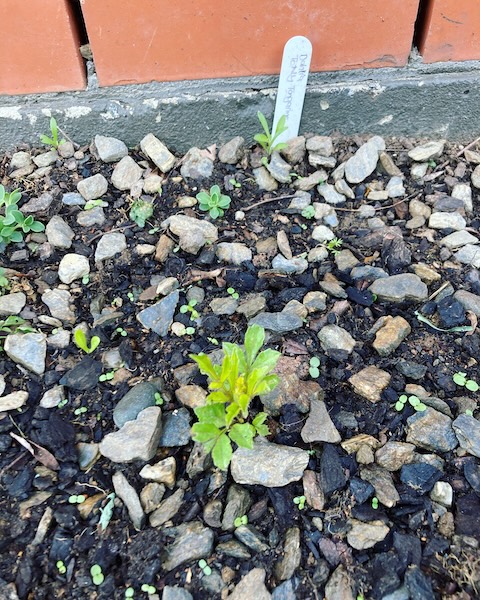
It used to be that you could plant temperature sensitive crops of all types in Dunedin at Labour weekend, which is in the third weekend of October. But for the last three years we either have had a snowfall in the last week of October, or we have a very late frost in the first week of November. As this is a death sentence for any dahlia growing in the garden, I've had to come up with a frost protection method which will work for all my dahlia plants.
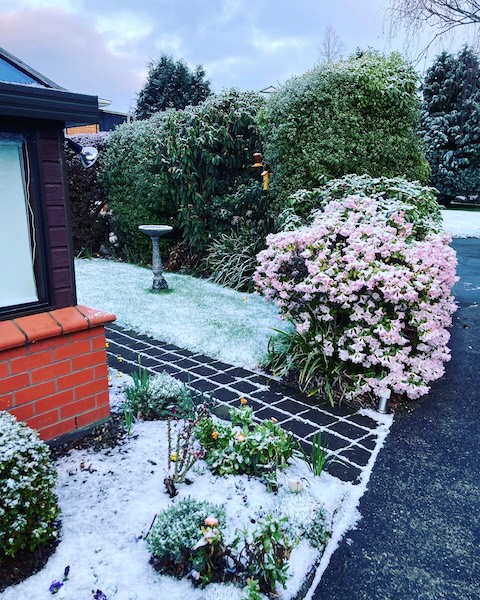
Over the last couple of years I've tried frost clothing my dahlias, but this method is prone to the wind blowing the frost cloth off overnight before the frost at dawn. So I've had to resort to a more brute force method of protecting my dahlias. After many trials, I finally settled on using a lot of small, cheap buckets, placing them on top of the dahlias on risky nights, and holding them in place with a spare piece of firewood.
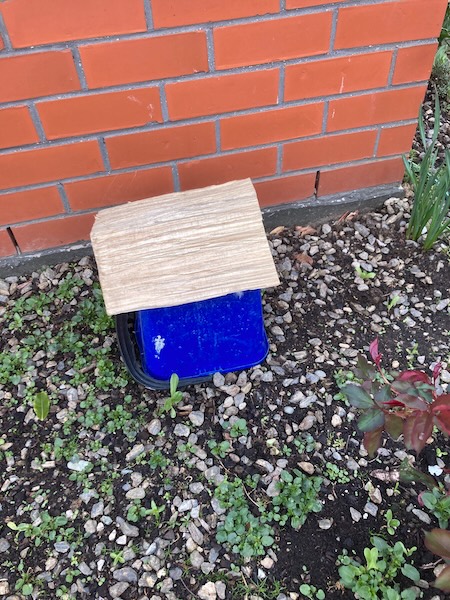
It's not a very pretty method, but it does the trick. It does take a lot of work though, going around each night putting buckets on dahlias, and then the next morning removing them when the temperature rises. Larger buckets are needed to protect the dahlias as they get bigger. Then there is the problem of running out of buckets if too many dahlias are above ground, and I'm not proud to admit this, but that's when I resort to raiding the kitchen cupboards for ice cream containers and mixing bowls...
I used to go around with a wheel barrow collecting up all the buckets and firewood each day, and then redepositing them each night, but now I've gotten lazy, and leave them sitting beside each dahlia all the time for easier distribution. It may make the garden ugly looking for about a month, but I can totally live with that.
The whole process is a giant pain in the ass, but it's completely worth it in summer when my garden is filled with flowering dahlias.
Have a wonderful day
Julie-Ann
Want to discuss my post? Feel free to chat with me on Instagram or Mastodon or Bluesky.
Making Citrus Frost Cloth Covers
Hello friends,
After buying a frost cloth cover from one of our local garden centres back in May, I wanted to make bigger versions for my three citrus plants before winter arrived.
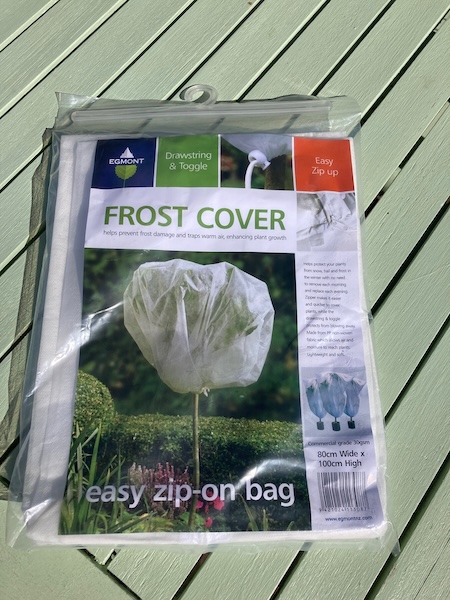
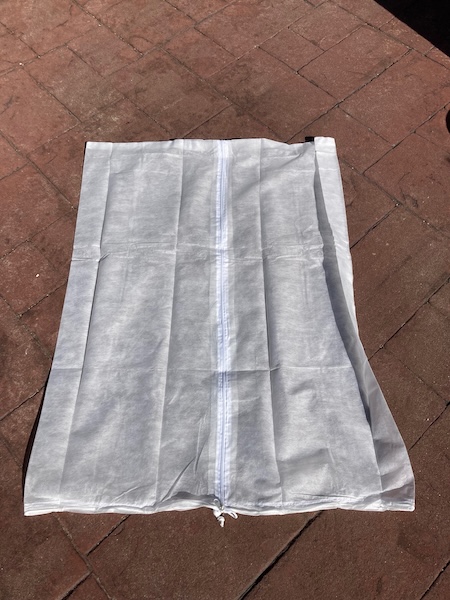
Luckily I had some very thick frost cloth in storage from last year, so I tracked it down and then got to work. The frost cloth was 2 metres wide and many metres long, so I used the width of the frost cloth as the height for each frost cover. I wrapped the frost cloth length around each citrus plant, added extra space for wiggle room to fit it over the citrus plants, and then marked it out on the frost cloth. I decided that adding a zip was just extra work, and more expensive, so I didn't bother with it.
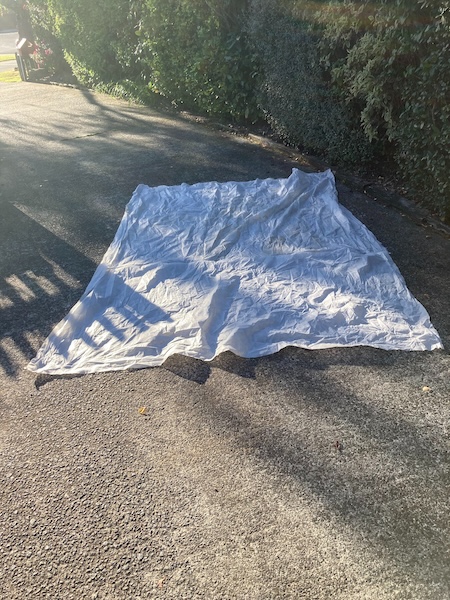
Once I had measured each plant, I went up to my craft room and cut off a length of frost cloth for each frost cloth cover. I then folded each section of frost cloth width wise, so that the width of the frost cloth formed the sides of the frost cover. The length of frost cloth that was folded in half then formed the top and bottom of the frost cover. With this done, I sowed along the top and the side of the frost cover. The bottom of the frost cover was left open for making the casing for the pull string, and to pull over the citrus plants when the frost cover was finished. I used a normal straight stitch on the sewing machine, and made sure the ends were well tacked down.
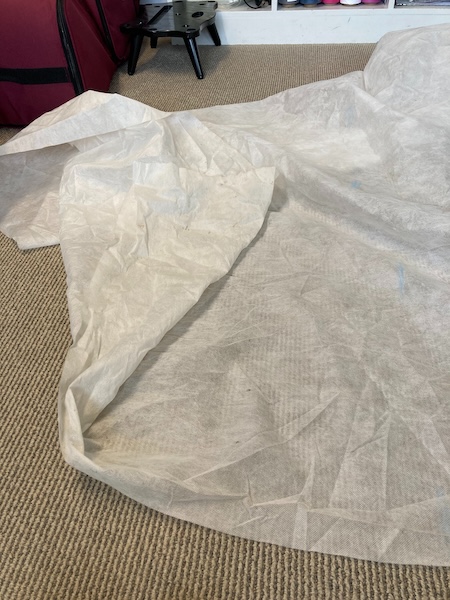
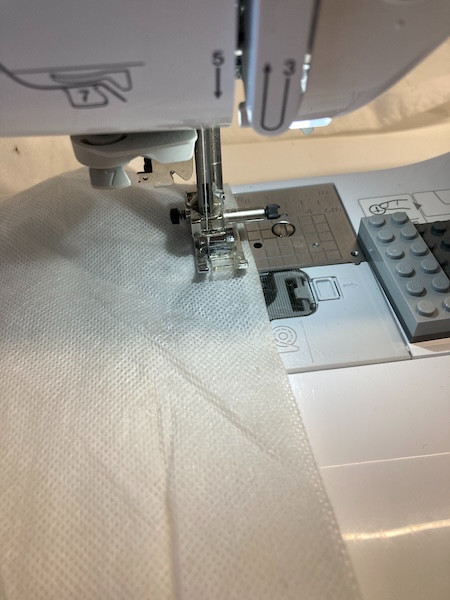
The next step was to sew a casing in the bottom of the frost cover, leaving a small opening so I could insert some nylon rope in a circle around the bottom. I purchased some general purpose nylon rope from Mitre 10, and some cord pullers from Spotlight.
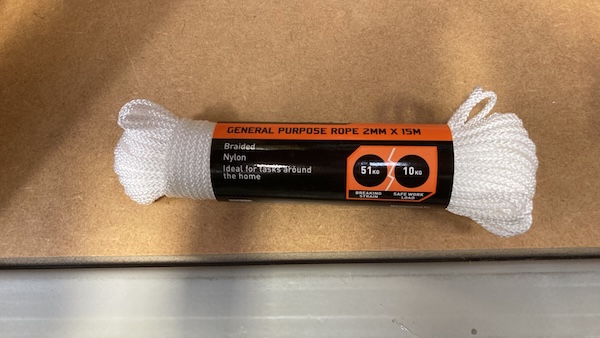
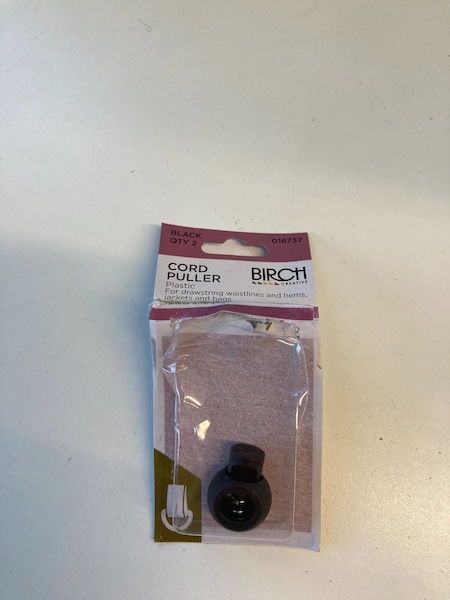
After sewing the casing, it was time to unwind the general purpose rope, and insert it into the casing. This was when Rosie cat came to assist me, and she helped me add the rope and the cord pullers to all three citrus frost covers.
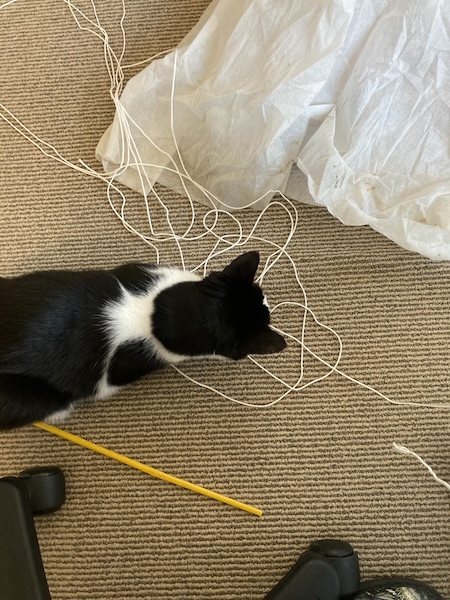
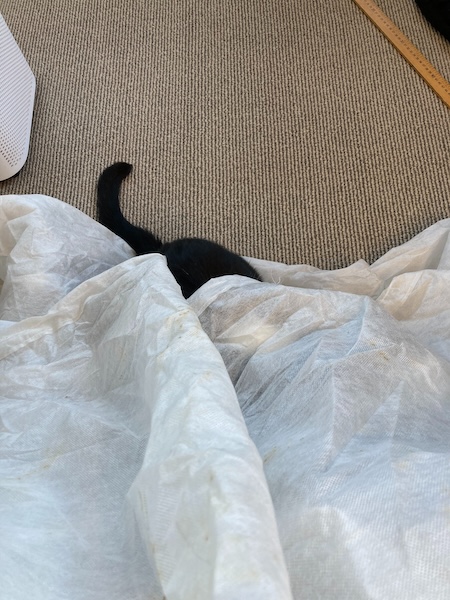
After making sure the cord pullers all worked, and tying the ends of the rope tight together, the frost covers were ready. After trying on each frost cover to the corresponding citrus plant, I labelled each one with a permanent marker.
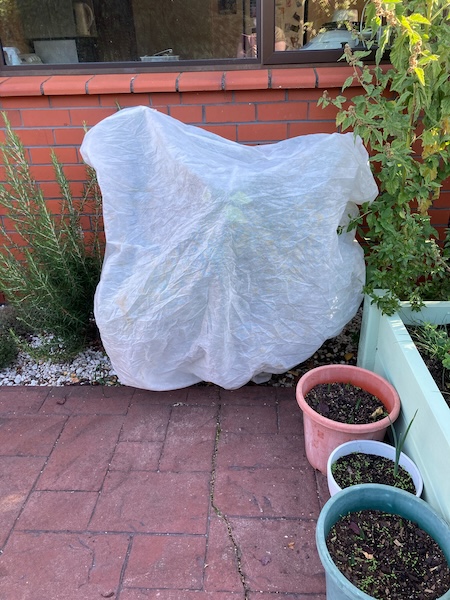
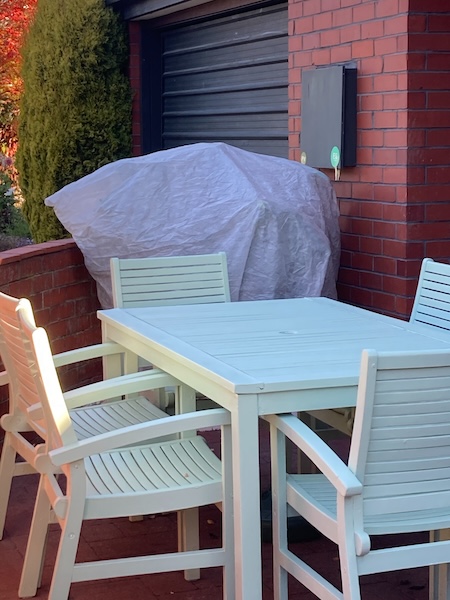
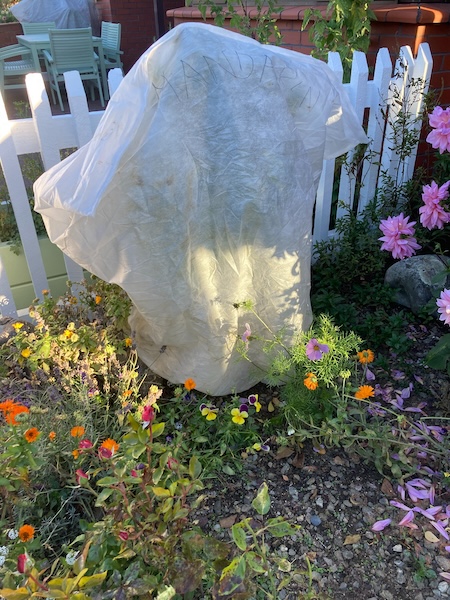
It's now winter, and we've had multiple frosts now. The frost covers have been such an asset to have, as they are so easy to pull on and off. It's really been so much easier to protect my precious citrus plants from frost and snow. And to make the frost covers myself, it was just a crafty bonus.
Have a wonderful day
Julie-Ann
Want to discuss my post? Feel free to chat with me on Instagram or Mastodon or Bluesky.
Outdoor Citrus Frost Cloth Project
Hello friends,
Sometimes it's just easier to buy stuff you need for the garden, and especially when the task you need to complete takes up a lot of time.
We were in the local garden center the other day and spied a new product on the shelves. Egmont is now selling a frost cover with a drawstring and toggle, and the frost cover is zipped on for easy placement and removal. The frost cloth is commercial grade, and the fabric is 30 gsm. I didn't buy one at the time because the bag is only 80 cm wide by 100 cm tall. The bag wouldn't be big enough to fit any of my citrus plants.
But after thinking about it over the Easter weekend, the bag would be big enough to use as a template to make larger versions that would fit my citrus plants. I went out and bought one after Easter, and it was only $10, which is a pretty good deal considering how big the zip is.
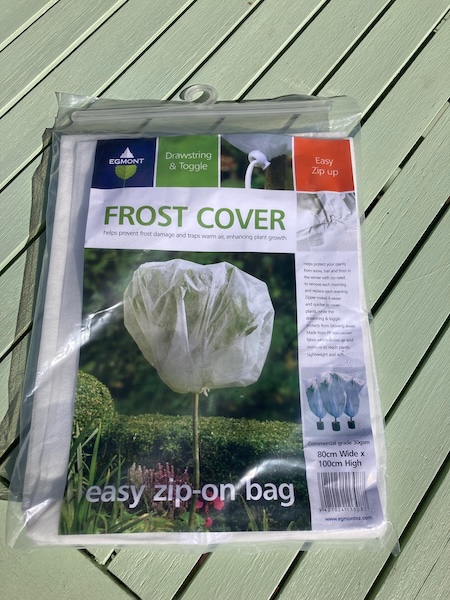
As you can see from the photos the frost cover bag is a rectangle which has been folded in two halves with a zip down the middle. The top is sewn across with a heavy seam which won't rip easily. The bottom contains a fabric casing to hold a thick cord, which is held in place by a strong toggle.
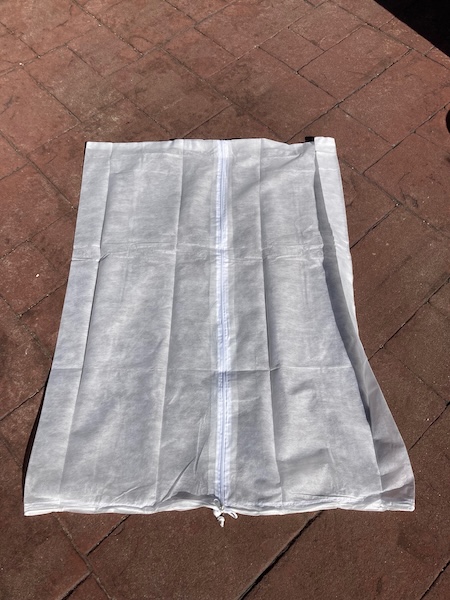
I tried placing the frost cover over the smallest citrus plant I have, which is our mandarin bush, and as you can see it is pretty squished inside the frost cover. It definitely needs more space so that the branches don't get squished. But the frost cover was pretty easy to put on, and the thick cord and the toggle did a great job of keeping the frost cover in place.
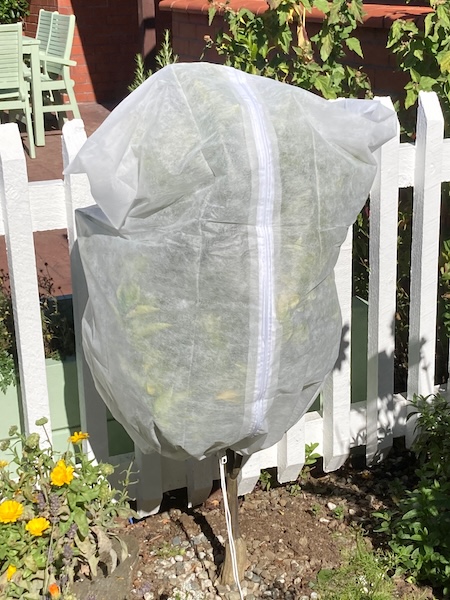
So even though I can't use this frost cover to protect my citrus plants, I can use it as a template to make bigger versions that I can use. And afterward I can use this frost cover for my small Camellia sinensis tea plant over winter, so that is a good bonus for me. In the coming weeks I'll make up the template for the citrus plants, and build a trial one for testing.
I did ask the garden center if Egmont planned on making bigger versions, but she said that this product had only just come onto market, so not likely this year. They were going to pass on my suggestion for Egmont make bigger versions in the future.
My suggestion is if you do have smaller citrus plants, that the Egmont frost cover is definitely worth buying for your plants over the coming cold season. With it being easy to take on and off, it'll save you time and protect your precious plants from any frosts that do happen.
I just need to now pull out all my current frost cloth stash and see if I have any frost cloth that can be used for making some bigger covers for my own plants.
Have a wonderful day
Julie-Ann
Want to discuss my post? Feel free to chat with me on Instagram or Mastodon or Bluesky.




